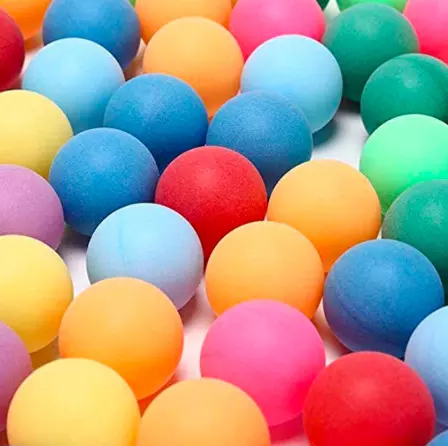Bulk Ping Pong Balls: The Ultimate Guide for Choosing the Best Ones
image for illustrative purpose

Bulk ping pong balls could always be an excellent answer to the situation involving a large event organization, recreational facilities setup, or a sports facility outfitting. Buying wholesale can save you money and never run short of ping pong balls to tournaments, training or friendly games. In this guide, we will take you through the main aspects you should take into consideration when you are buying bulk ping pong balls and also, the ultimate best ping pong balls in the market today.
Factors to Consider When Purchasing Bulk Ping Pong Balls
When bulk buying ping pong balls, the following factors should come in handy so you can get the most appropriate product that will suit your needs.
1. Type of Ping Pong Balls
There are two primary types of ping pong balls to choose from:
- Competition Balls (3-Star Balls): These are the highest quality ping pong balls, used in official tournaments. They are made from celluloid or a plastic alternative and are designed for consistent bounce, spin, and durability. If you're hosting a serious tournament or need top-tier performance, competition-grade balls are the way to go.
- Training Balls (1-Star and 2-Star Balls): These balls are generally less durable and less consistent than 3-star balls. However, they are perfectly suited for casual play or practice sessions. They are typically made of lower-quality plastic and may not have the same consistent bounce, but they are more affordable for general recreational use.
2. Material
The traditional ping pong ball material is celluloid, although following safety concerns relating to its tendency to catch fire, most modern ping pong balls are manufactured out of plastic (poly). Plastic balls will be longer lasting, more stable and even crack less. Bulk balls should be carefully selected by examining the material to ascertain that the material is aligned with personal preference.
3. Size and Weight
A ping pong ball is officially sized at 40mm diameter, and it weighs about 2.7 grams. This is the usual size of a tournament competition. When buying to have fun you might come across some smaller balls or light ones but it is good to have an official 40mm ball to ensure that there is uniformity when playing the game.
4. Color
Ping pong balls may come in different colors but mostly they come in white and orange. The given color is also likely to vary with the surrounding where the game is played. White balls are generally used in indoor locations with a light background or in locations where there is poor contrast with the background, whereas orange balls can be used well in the area with less enlightenment or in the area where the opposition is poor.
5. Packaging
When you buy ping pong balls in large quantities, you have to consider the packaging of balls. The majority of suppliers provide bulk packaging in which there are between 100 to 500 balls in a box depending on the requirement. Others will also have convenient containers or mesh bags as a way of easy storage and transportation.
6. Durability and Bounce
The durability of these ping pong balls is a major factor to keep in mind during your selection process especially when it is either a professional or competitive purchase. Quality balls withstand more impacts and last longer before becoming flatter and taking more impacts.
Conclusion
Whenever buying bulk ping pong balls, one would want to think of the type, material, size and the color as well as the packaging so that he/she ends up with the best value and performance that they need. Whether you are a professional organizer, a sports facility manager or just a ping pong fan, you can get what you want by bulk buying.

